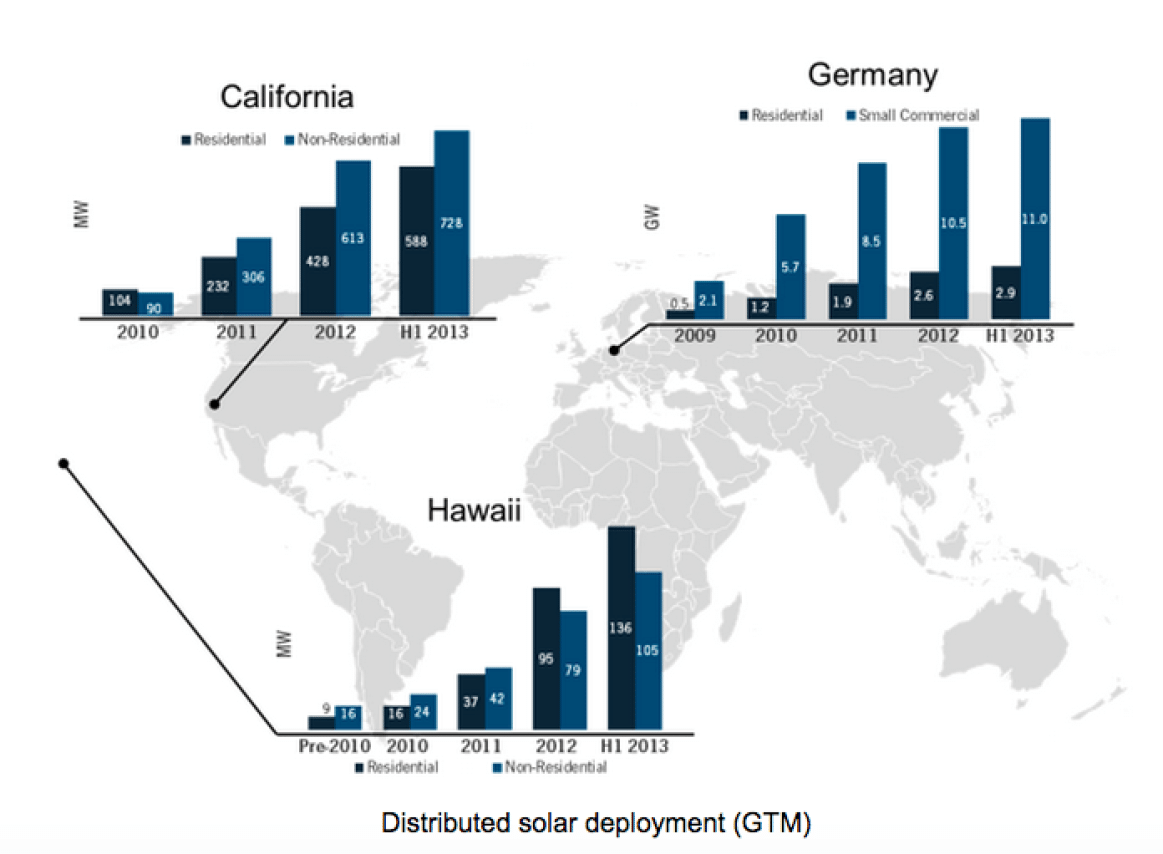
There are many reasons to promote the spread of solar; decreased dependence on volatile fuel commodities, minimal operational costs and near zero emissions. For these reasons and more, many states and the country as a whole have set targets for renewable generation share. Seeking to lead by example, California Governor Jerry Brown recently announced his states intention to reach 50% renewable power generation by 2050. These goals naturally prompt questions regarding the quantity of renewables that the current topology of the grid can absorb. And for our purposes, how much solar can the grid handle?
In reality no one knows for sure. Market penetration of variable distributed energy resources (DER) has never before existed at current levels. Regardless, the California PUC remains confident that achieving 100% renewable generation is possible, referring to the 50% figure as merely a stepping stone. Recent solar and wind production in the state has topped 40% of daily supply, seemingly supporting the PUC’s claims. In fact, in the past year, CA has repeatedly generated more energy than its native customers demand, forcing exports to neighboring states and curtailment of fossil generators.
Utilities however remain unconvinced that large amounts of DER can be seamlessly accommodated into todays grid without compromising power reliability. Concerns arise from localized distribution circuits, designed to handle power flow in one direction, now frequently tasked with handling intermittent flow in the opposite direction than originally intended. This issue is exemplified in Hawaii where roughly 12% of homes now have grid-tied solar.
Assigned the delicate balance of constantly matching supply and demand, utilities are quickly finding the grid to be blind to fluctuations in DER output. To address blind spots in the grid the Hawaii Electric Company (HECO) has partnered with micro inverter manufacturer Enphase to pull voltage data from homes across Oahu. Access to granular data has already cleared the way for HECO to intelligently approve interconnection agreements for new solar customers.
A spectrum of clever technological solutions hold promise in ensuring the grid can handle any amount of solar and other renewables that we tie-in. In addition to smart granular metering, energy storage paired with dynamic short range markets and improved market forecasting that more accurately captures impacts of climatic conditions on renewable resources will aid in the grid-integration of DER.
Germany, which boasts nearly 30% renewable supply, has employed many of these strategies to accommodate swings in DER production. Production swings can also be supplemented by responsive gas-fired turbines, which represented 50% of added capacity in the US in the past year. The cost to upgrade grid infrastructure is immense. The first Quadrennial Energy Review was released this month by the White House and cited the Edison Electric Institute in calling for $900 billion of required T&D investment by 2030. We have the technology, ultimately the question is really not how much solar can the grid handle but who will bear the cost of ensuring the system is ready.